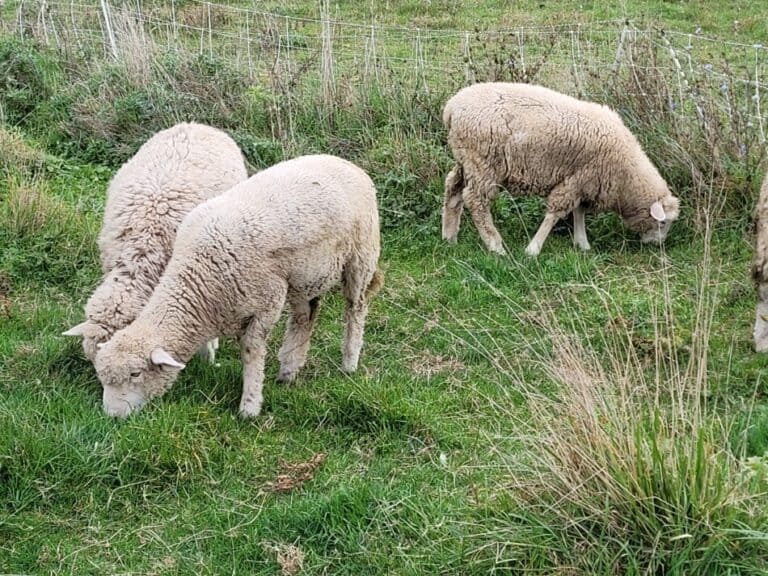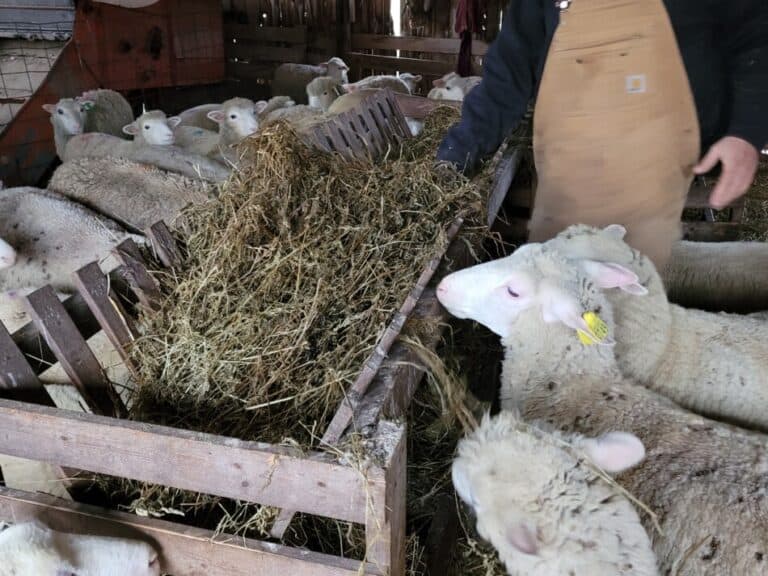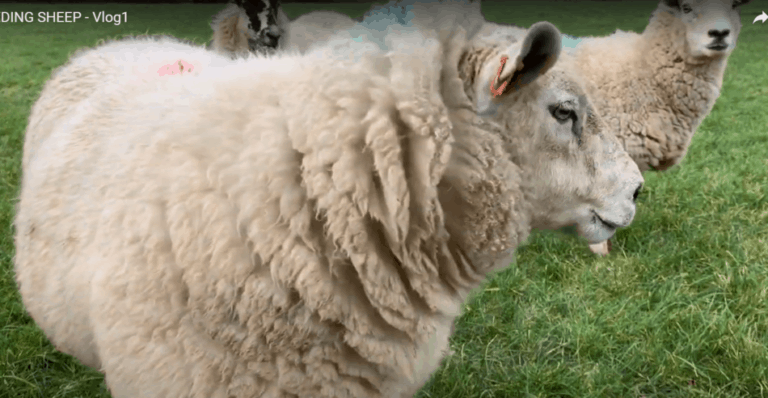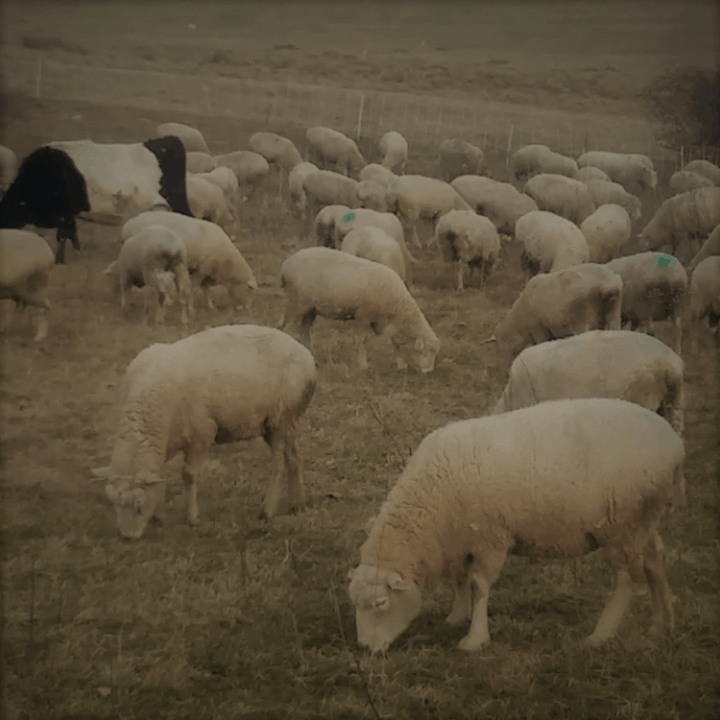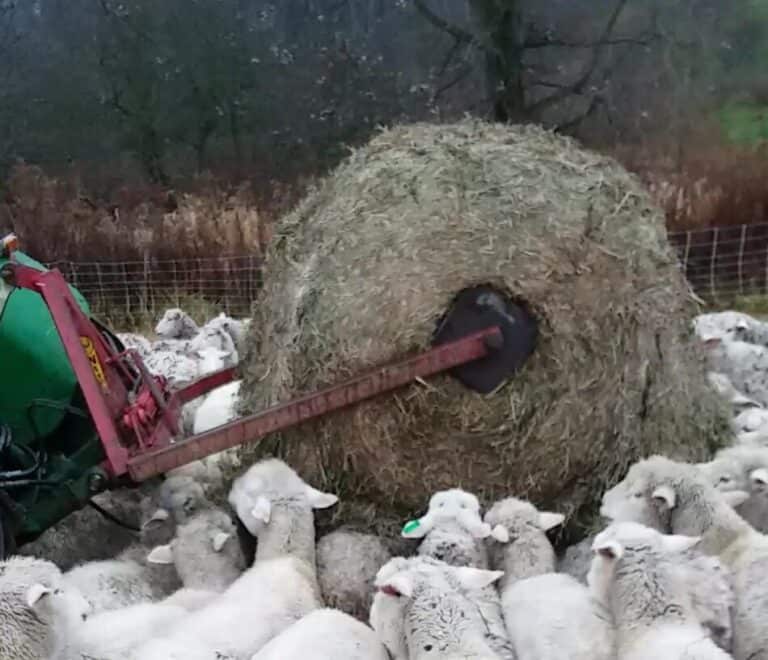Hay For Sheep: Which Hay Is The Best Choice For Your Flock?
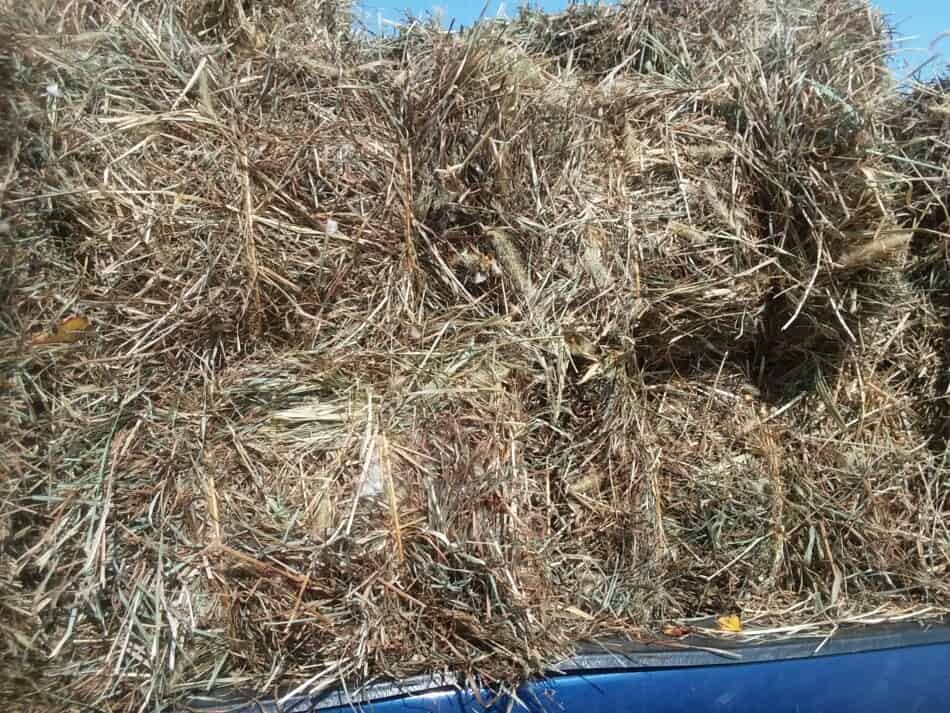
When you have sheep, you’ll need hay. Looking around online or at the hay sale, you see multiple options.
Options are great, as long as you know what to buy! What is the best choice of hay for your flock?
For maintenance sheep use high quality first cutting grass or mixed hay. For sheep needing high levels of energy, like milking ewes or growing lambs, feed a high quality second or third cutting hay.
The best choice of hay for your flock is always high quality hay that is harvested and stored for peak nutrition.

How much hay will your flock need this year? Read my article How Many Bales Of Hay Do Sheep Need? to get the details.
The hay should be green, smell great and have plenty of leaves. This applies to all hay plants and all cuttings.
The different cutting of hay will have different appearances, but all should be green, leafy and smell good.
Types of hay will vary based on where you live. Look around online to see what is commonly available in your area. Here in Ohio, we commonly see alfalfa, orchard grass, timothy and mixed hays.
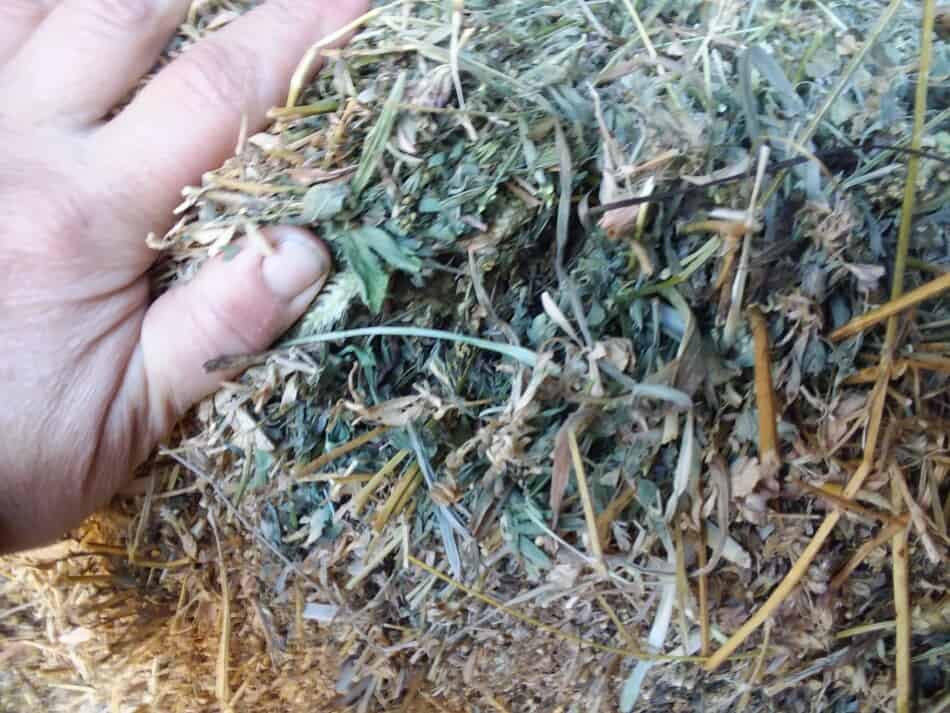
Match the hay to the need of the flock
Your sheep will need different nutritional levels at different stages of their lives, the hay you feed needs to match those levels of need.
Generally speaking, sheep that are maintaining body weight, this would be adult sheep not nursing lambs or in early gestation, will have very basic hay needs. The hay needs to be decent but nothing spectacular.
Once the ewes start milking, the game changes. Now they need great hay to keep up with the demands of milking and to keep themselves in good condition.
If you feed the lactating ewes poor quality hay, you will be shorting the milking ability of the ewe giving the lambs less milk to grow on. Bad idea.
For lambs, since they are growing, their hay needs to be high in nutrition as well as palatability. Give growing lambs high quality hay, no exceptions.
Replacement stock, like ewe lambs, also need higher quality hay than maintenance needs sheep.
You want these gals to be in great shape for breeding, this means keeping them growing at their best up until breeding time or holding them over to breed next year.
We choose to keep ewe lambs growing well and breed for the first lambing at one year of age. If you slack off on their nutrition, this won’t happen.
| Type of hay | Percent protein |
| Alfalfa hay, pre bloom source: UT Extension | 21.1% |
| Alfalfa hay, early bloom | 18.9% |
| Alfalfa hay, full bloom | 16.3% |
| Red clover source: MU Extension | 14-15% |
| Orchard grass | 12-15% |
| Timothy, late boot | 11.3% |
| Timothy, late bloom | 5.4% |
Use high protein hay for high calorie needs
Sheep that are needing more nutrition since they are working will need a more nutritious hay than a maintenance level sheep. Examples of hard working sheep are lambs that are growing fast and lactating ewes.
For either of these groups you’ll need to be feeding better than normal hay because you are wanting higher than normal levels of performance.
Alfalfa hay should have lots of leaves

We were filming a video here, I don’t recall what I thought was so funny!
Alfalfa hay is the classic here. 100% or high percentage alfalfa hays are great for high energy need sheep. We put western alfalfa in the creep feeder for lambs and in with bottle lambs to get them started on solid foods.
Sheep tend to love alfalfa and will happily eat it. Be sure you are seeing lots of leaves when you open up a bale.
The alfalfa leaves are the part of the hay that packs the heavy nutritional punch that alfalfa is famous for. The stems, not so much. Make sure your alfalfa hay is full of leaves.
Looking at the table above, you’ll notice that the protein levels of hay vary depending upon the stage at which the alfalfa was harvested. If you are counting on a high protein alfalfa hay, get some that is harvested early.
Clover hay is great for sheep
Clover hay is often overlooked when shepherds are seeking high quality hay for their flock. Well made clover hay is wonderful stuff. Give it a try and see how your gals like it.
Read the article on Red Clover at MU Extension for more details on the potential of red clover hay for your sheep.
Grass hay for general flock needs
For general flock needs, consider using a grass hay, like timothy or orchard grass. This hay must be well made and full of leaves. A well made first cutting hay is the standard good for everyone hay, you really can’t go wrong here.
Now, a late made hay is a different story. If you see that it’s all seed heads, it is overly mature and will not be a good use of your money to feed your sheep.
Your flock might eat it, but this hay will not give them the nutrition they need for their health and performance. Get high quality hay.
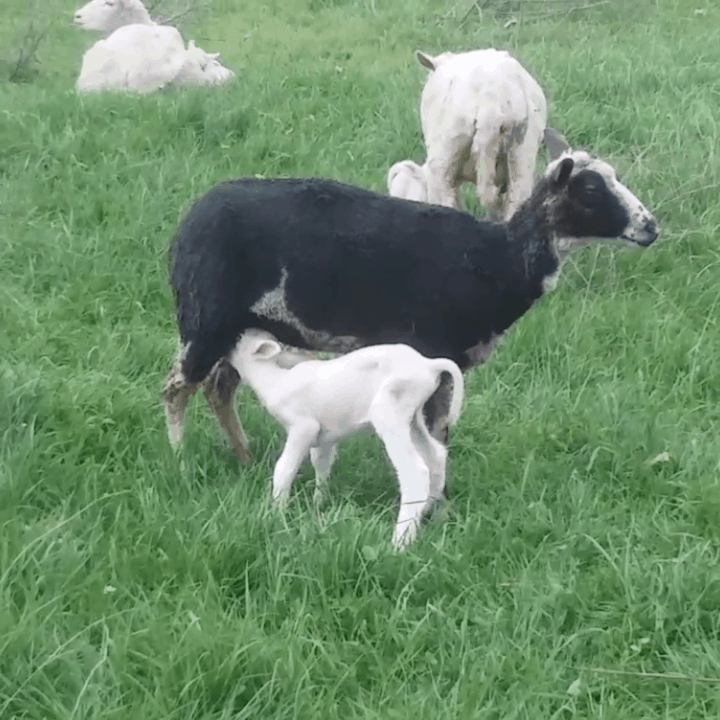
Orchard grass hay is a classic
In our area, orchard grass is a popular hay grass, so you’ll see it used when planting new hay fields.
We use it as the grass component to any mixed hay we plant. Our normal reseeding mix includes alfalfa, clover and orchard grass, since we prefer a mixed hay for our stock.
The good news about orchard grass is that it seems to grow well around here and has been a classic hay choice for years.
The not so great news about orchard grass is that it tends to mature earlier than most other grasses in the spring.
Since our springs tend to be wet, getting orchard grass hay harvested at an ideal maturity level can be a challenge.
This year hay harvesting went well. Making great, high quality hay was very doable for Ohio. Some other areas of the country, not so much.
As long as the orchard grass in your hay is made on time (no seed heads), it makes super grass hay.
Since orchard grass is the most likely culprit in overly mature hay, be sure to check for seed heads before you buy.
Timothy hay is wonderful, sheep love it!
Timothy hay is wonderful! Anything we have fed it to loves it. If you have a source of well made timothy hay, consider yourself to be pretty lucky and buy some for your flock!
Of course, timothy hay can be make when it is overly mature, like any other hay. It is less likely, since timothy matures a bit later in the spring than other hay grasses.
This later natural maturation gives the farmer a bigger window to get the hay harvested at a high nutrition level. Good news for anyone wanting great hay!
The catch with timothy is that not a lot of people are growing it anymore, so it is harder to find.
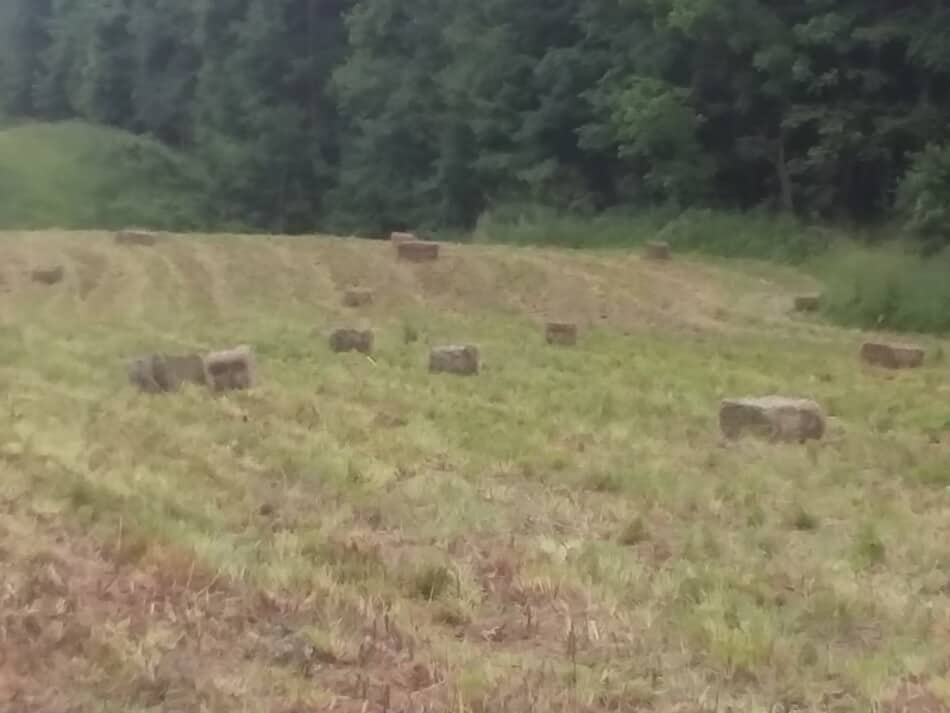
Mixed hay is a great choice for sheep
We love to feed mixed hay, to sheep or any other livestock. By mixed, I mean the hay has some grass and some alfalfa in it. This is our favorite hay to feed nearly anything, it’s so versatile.
The same rules apply to mixed hay as any other hay, it still needs to be made on time and look nice and green to be good.
If you can find mixed hay in your area, give it a try.
Tips on selecting hay for sheep
Selecting good hay for your flock is a skill you’ll want to get familiar with.
For all types of hay:
- More leaves than stems
- Looks good
- Smells good
- No mold
- No seed heads
First cutting hay should be made early
First cutting hay can get the reputation as being poor quality hay, this is an undeserved criticism. Late made first cutting hay is likely to be of poor quality, true.
Made on time, first cutting hay is the great all round hay for nearly any livestock (except for high needs animals).
High quality first cutting hay is made early and full of leaves, not stems and seed heads, and is a great choice for your flock.
1st Or 2nd Cutting Hay? shows you the specific things to look at so you can tell which one you are buying!
Second cutting hay should be fine stemmed
Second cutting hay should be green, have fine stems and lots of leaves. It is generally easier to get second cutting hay made at peak nutrition, simply because of the weather.
Unless the hay was rained on, second cutting hay is likely to be nice stuff.
Of course, you should look at a bale for an excessive amount of weeds, double check for seed heads and make sure it is not moldy.
Second and third cutting hay will cost more
Second and third cutting hay will cost more than first cutting, as they should. Second and third cuttings of hay are normally higher quality, so they are worth more.
Great hay that is chock full of nutrition is worth more, to you and your flock. It only makes sense that it will cost more, but will also be worth it.
Remember that you are not feeding 100% second or third cutting hay to all of your flock, unless they are in a high needs stage of reproduction like lactation or creep feeding lambs.
Have some of this nicer hay on hand to supplement the main hay, which is probably a first cutting, and give a bit of second or third cutting to any sheep that needs a nutritional boost.
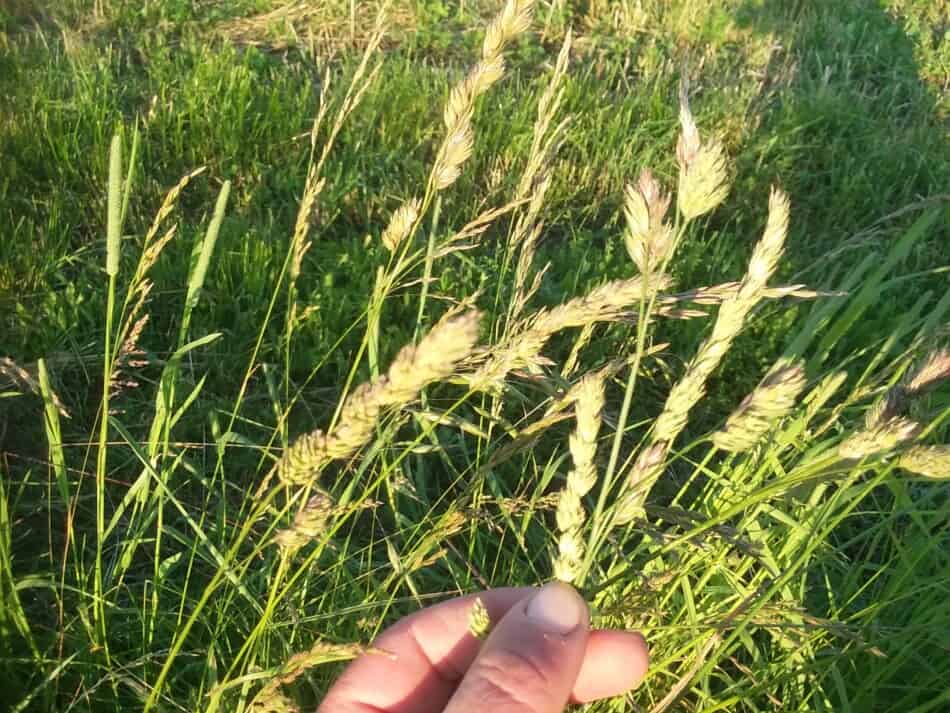
You can feed a mix of hay to your sheep
As mentioned above, we love mixed hay. There are a few reasons why, the sheep and farming practices.
First off, the sheep like a mixed hay. I like to think of it as a salad, looks good, tastes good and good for you.
Secondly, a mixed hay will not be sprayed for management reasons, since whatever chemical used would kill part of the hay plants that are similar to the weeds being sprayed.
To manage weeds or pests in a mixed stand of hay, the field is mowed. That’s it, no chemicals.
To be clear, not all hay fields are sprayed. The fields that are sprayable must have all similar plants in them. Mixed hays or even hay with a few weeds shows that it was not sprayed.
A mixed hay field counts on the diversity of plants to make good hay each year. Some years the alfalfa will do better, some years the grass or clover.
Fields with just one type of plant growing do not have as much flexibility and count on the weather being great for that plant that year for the field to grow as planned. Sometimes this works out, sometimes it doesn’t.
Avoid poor quality hay for sheep
There are certain hay types and qualities that you should not be feeding your sheep. Mainly this is overly mature hay (made very late) and moldy or dusty hay.
Overly mature hay is basically bedding. The nutritional potential of this hay is lost, since it was made late.
How much of the value is lost when hay is made late or rained on? Read this wonderful article from University of Tennessee Extension, High Quality Hay Production by Gary Bates, Professor, Plant Sciences
How can you tell if you have overly mature hay? Look at the individual pieces of grass in the bale.
Do you see plenty of leaves or are you seeing stems and seed heads? If you are seeing a fully developed seed head sticking up from the stalk, that plant was too mature when it was cut for hay.
If you see the seed head barely peeping through, just starting to form, it’s still good.
Moldy or really dusty hay is your other concern. Moldy hay is a waste of your money. Your sheep should not be eating moldy hay.
Moldy hay may have had good nutritional potential when it was growing and when it was cut, but somewhere along the way things went wrong and that potential was lost. Don’t buy moldy hay.
Dusty hay is not great either. Dusty hay is another case of something in the process of hay making went wrong after mowing what should have made a nice field of hay.
We will feed hay that is a bit dusty, it usually is not a big deal. Notice I wrote “a bit dusty.” Hay that is really dusty should be avoided.
It’s funny that moldy and dusty are actually both hays that have mold.
With the hay that is moldy, the hay has enough moisture to grow mold on it. With dusty hay, the hay still has the mold, that’s what the dust is. The dust is the mold spores.
Ask for “horse hay” not sheep hay
For some reason, saying you want horse hay will communicate your need for higher quality hay than just saying hay for sheep. Asking for dairy hay, if you are in a dairy cattle area, will work as well.
Don’t go with beef cattle hay or goat hay. Those are terms people put on hay that is lower quality. Not that beef cattle or goats will do well on poor hay, they won’t, it’s what seems to be a common (but erroneous) thought.
Once the person you are buying from understands what you want, this “horse hay” thing won’t be an issue.
Unless you are buying from a fellow shepherd (who has nice sheep), be sure you ask for horse or dairy quality hay. This will give the seller a more accurate idea of the high quality, well made hay you are looking for.
